When Roger Boltshauser began designing ETH Zurich’s GLC research building, one of his contextual references was the school’s nearby Maschinenlaboratorium, an early 20th-century complex now recognized as a key landmark in Swiss Modernism. Begun in 1895, just a stone’s throw from ETH’s main building, the ensemble was radically overhauled in 1929 by Otto Rudolf Salvisberg (1882–1940), a professor of architecture at the school. Completed in 1935, and admired by both Picasso and Le Corbusier, the closely packed group of buildings comprised four main parts: a long, sleek wing of classrooms and lecture halls on Sonneggstrasse to the east; a glass-roofed hall for testing motors and other machinery at the center; a glass-fronted block of textile laboratories on Clausiusstrasse to the west; and, just next to it, a district heating plant, whose concrete chimney and cooling tower have been a distinctive presence on the Zurich skyline ever since. In 2013, when the heating plant’s aging boilers were definitively decommissioned, ETH embarked on a major adaptive-reuse and overhaul program entailing everything but the former textile laboratory (which will be renovated at a later date). A decade later, this $127 million first phase of work has finally reached completion.
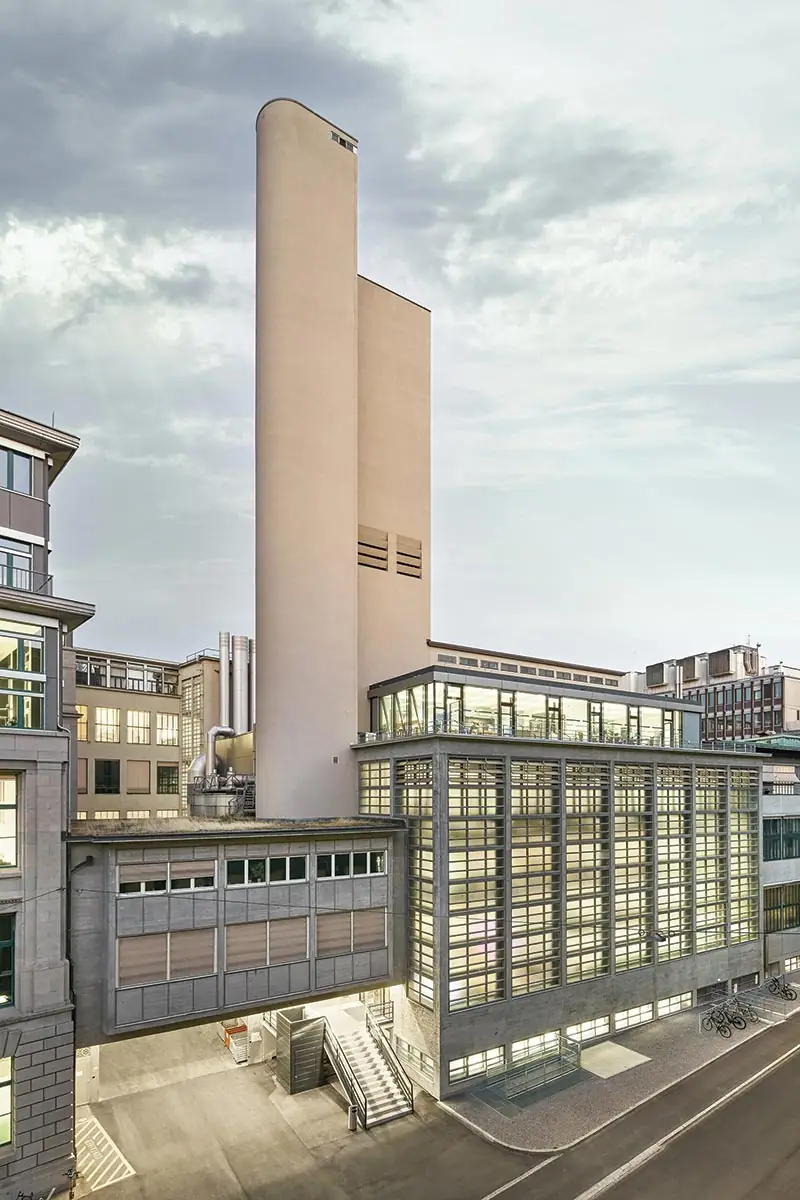
1
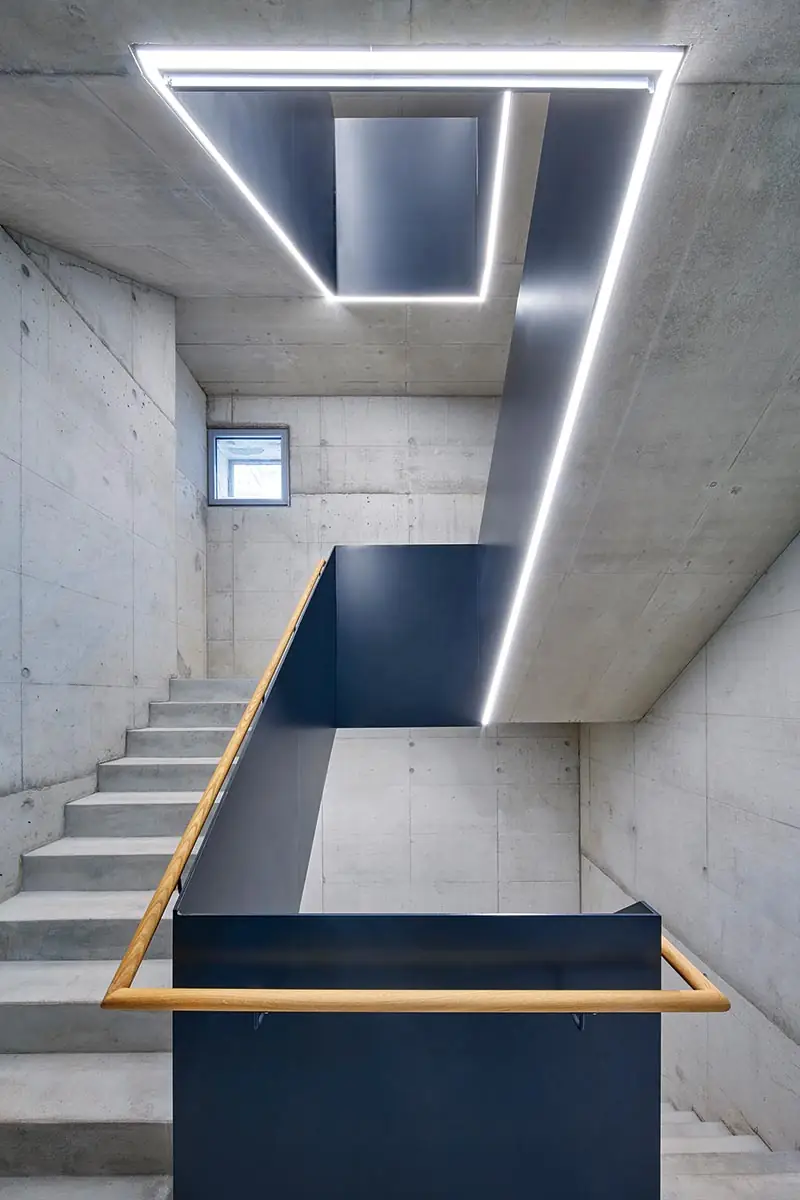
2
The chimney, cooling tower, and boiler house of the former district heating plant has been converted into a Student Project House (1). Its concrete stair core was added (2) and the interior of the machine hall restored (top of page). Photos © Franz Rindlisbacher (1); Luca Zanier (2 and top of page), click to enlarge.
“We did so much, and yet you don’t see anything,” laughs architect Marcus Klink of Itten+Brechbühl, the Swiss firm that carried out the renovation and whose cofounder, in 1922, was none other than Salvisberg (originally called Salvisberg Brechbühl, the office changed its name after his death). ETH’s brief laid out three main objectives: restoring the machine hall and converting it for use as a space for exhibitions, receptions, and experiments in robotics; converting the heating plant’s glass-fronted boiler house into a Student Project House (SPH); and ensuring that all three buildings conform to today’s fire and safety regulations. For Itten+Brechbühl, the biggest challenge was preserving the Maschinenlaboratorium’s interwar character, since the entire complex is landmarked, and the Denkmalpflege Abteilung—Zurich’s historic-monument commission—was watching closely.
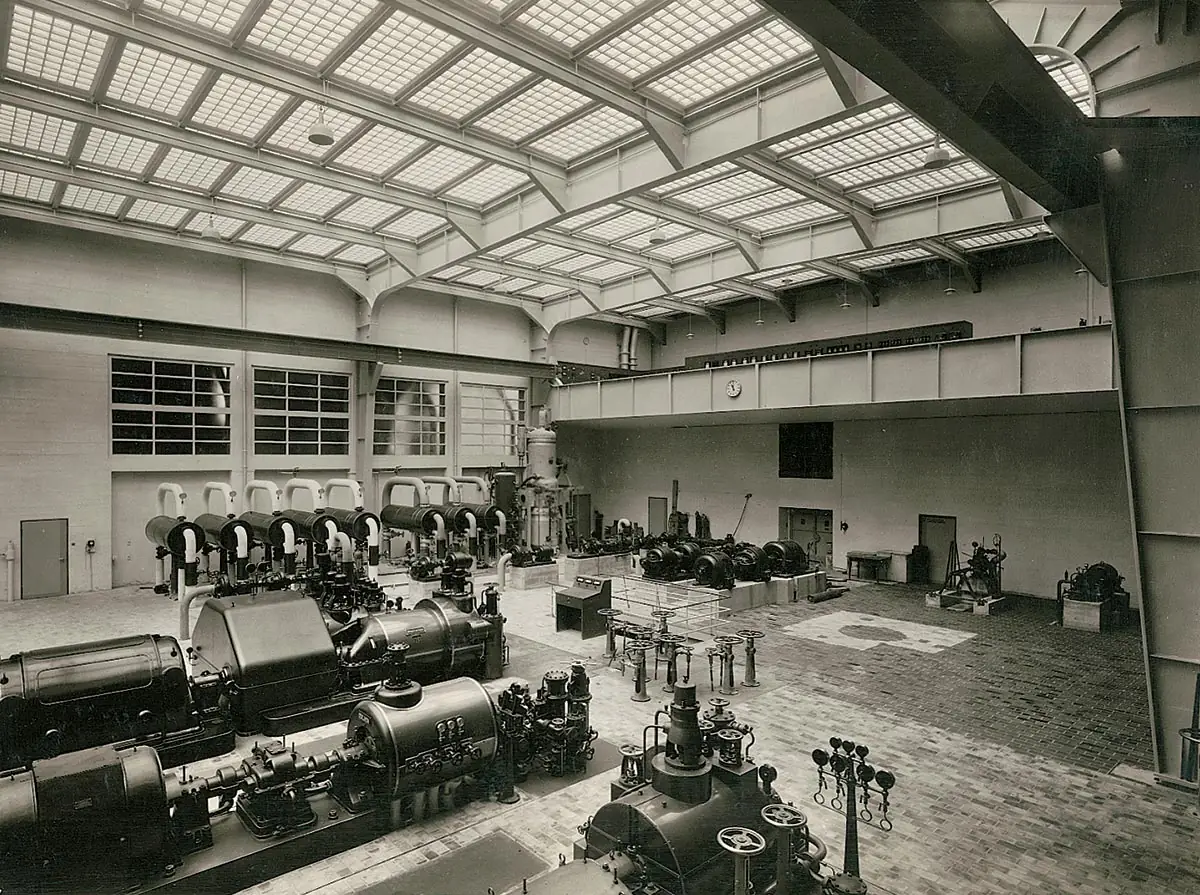
3
The machine hall (3) and workers in 1933 creating the Luxfer glass and concrete roof over the hall (4). Photos courtesy of ETH Library Zurich, Image Archive
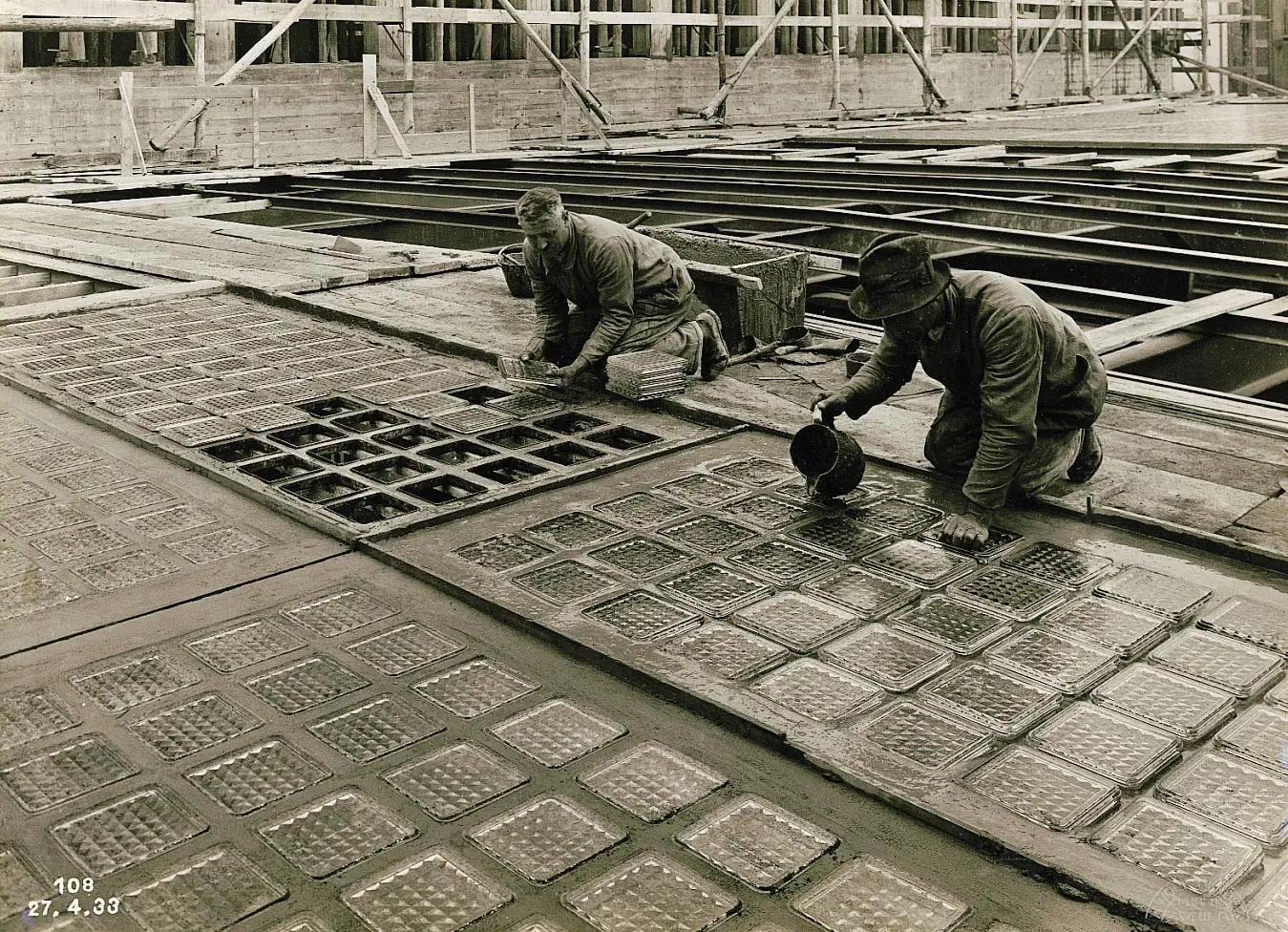
4
Despite the difficulty of carrying out work above continuously operating infrastructure—the heating plant’s basement now contains the district steam converter, with Salvisberg’s chimney serving to evacuate excess heat—conversion of the former boiler house was probably the most straightforward of the three tasks. Conceived as a place to encourage individual startup initiatives (such as recycling waste plastic from Lake Zurich), the SPH required meeting and seminar rooms and makerspaces, which Itten+Brechbühl supplied by adding a simple stack of open concrete floors within the boiler house’s volume. A new concrete fire stair ensures emergency evacuation, while energy-consumption targets are met by way of a modern glass skin built just inside the historic original.
Though it’s the one building that’s still used for its original purpose, the Sonneggstrasse classroom wing proved far trickier to renovate, largely because of changes in code with respect to fire safety and accessibility. Original doors had to be made flame resistant and/or widened for wheelchair access; classrooms and lecture halls supplied with an extra exit for emergency evacuation; and airy corridors that once flowed seamlessly into stairwells divided with fire breaks. Employing all sorts of ingenious subterfuges, and reusing as much original material as possible, Itten+Brechbühl have largely succeeded in rendering these substantial interventions invisible to the uninitiated eye.
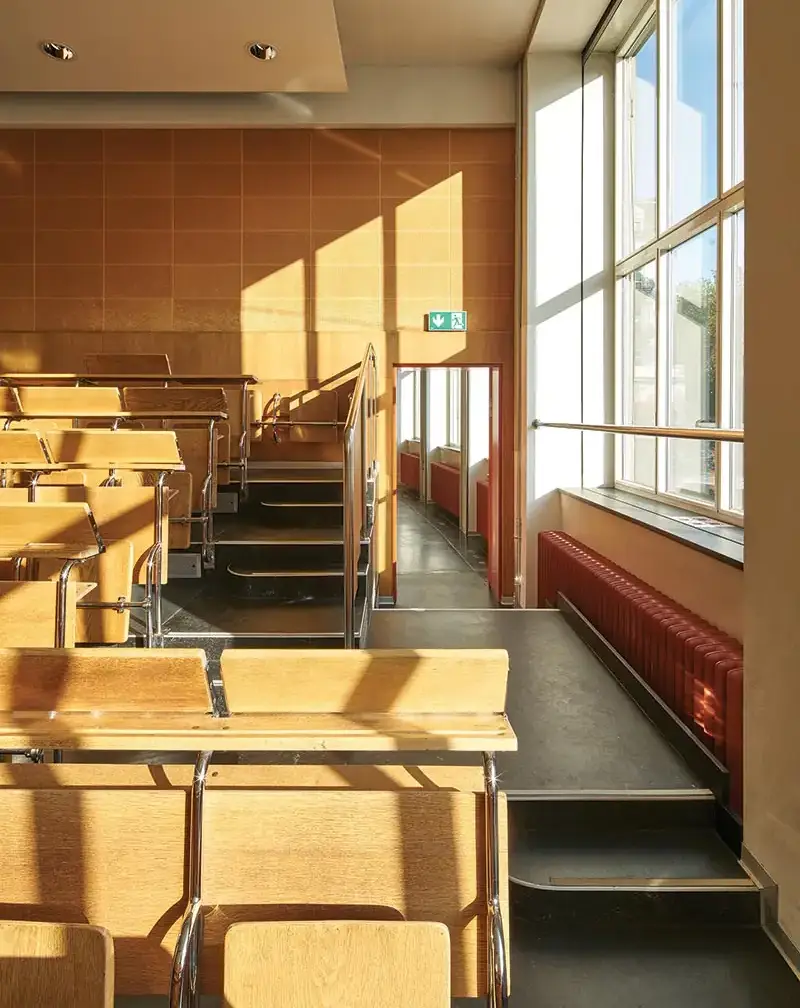
5
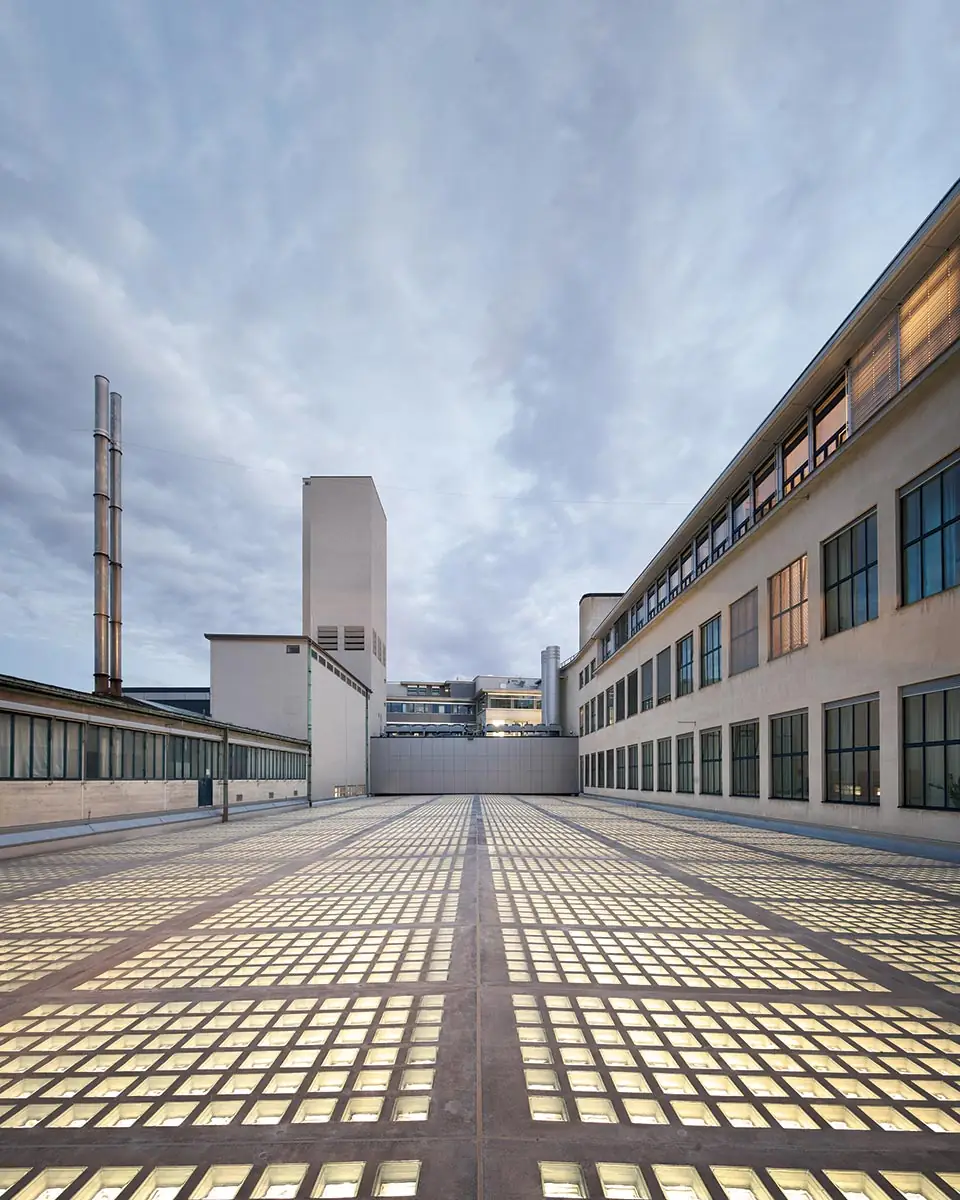
6
The same roof now refurbished (6), and a classroom with a new fire exit and resized seating (5). Photos © Franz Rindlisbacher
Conversion of the majestic machine hall posed its own particular challenges, not least the restoration of its glass block roof, one of the first in Switzerland. Too damaged to be retained, the original Luxfer glass prisms have been replaced by a double-skin system whose cavity contains inert gas to ensure thermal insulation, with the prism pattern replicated in the sandwich. Since the new covering is far heavier and more voluminous than the old, Itten+Brechbühl had to make sure the supporting structure could bear its weight, as well as that of the 4 inches of snow stipulated by code. Building regulations also complicated the addition of HVAC: machinery had to be installed on the roof at one end, but without its being considered an extra story—otherwise, the hall’s capacity would be reduced from 300 people to just 50. To appease the building inspectors, a giant steel truss, invisible from below, now bridges the space between the classroom wing and the heating plant.
As interwar buildings approach their centenary, complex heritage issues like these arise. Conceived for an age of abundant fossil fuels, early Modernist landmarks can prove particularly difficult to adapt. Unlike older buildings, which hide their obsolete equipment behind a layer of decoration, these reveal everything for what it is and make their mechanics an integral part of their design. Updating them is a delicate trade-off between preservation and use, a negotiation that Itten+Brechbühl have brokered here with admirable dedication and tact.



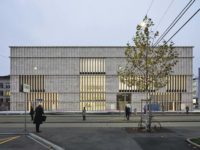
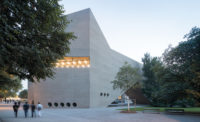
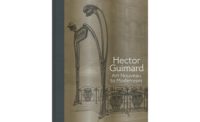
Post a comment to this article
Report Abusive Comment